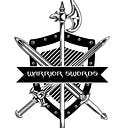LOTR: What Is Arwen’s Sword Called?
The Lord of the Rings movie series is filled with iconic weapons wielded by various characters. From swords and axes to spears and bows, these armaments hold weight beyond their physical form. Particularly noteworthy are swords with proper names, often imbued with blessings and reflecting the wielder’s lineage or destiny.
The Tradition of Naming Weapons
In Middle-earth, named weapons are frequently bestowed upon or crafted for royalty. These names hold significant meaning, often foreshadowing the weapon’s purpose. For instance, Thorin Oakenshield’s sword, Orcrist, translates to “Goblin-cleaver,” signifying its effectiveness against goblins.
Arwen’s Sword: Hadhafang
Arwen, the Elf maiden, wields a magnificent sword named Hadhafang. In Sindarin, the Elvish tongue, Hadhafang means “throng-cleaver,” hinting at its ability to cut through large numbers of enemies. Unlike some legendary weapons from J.R.R. Tolkien’s books, Hadhafang was created specifically for Peter Jackson’s film adaptations. However, it possesses a rich backstory that seamlessly integrates with the established lore of Middle-earth.
The Rich History of Hadhafang
Hadhafang boasts a storied past within the Elven royal bloodline:
- Idril: The sword was first entrusted to Idril, an Elven princess.
- Eärendil: Idril passed it on to her son, Eärendil, a pivotal figure in Elven history.
- Elrond: Eärendil, in turn, bequeathed Hadhafang to his son Elrond, who wielded it against Sauron’s forces during the War of the Last Alliance.
Design and Use of Hadhafang
The design of Hadhafang makes it ideal for horseback combat. Its shape facilitates swift and powerful strikes, proving effective against large groups of enemies, a common scenario in Elven battles.
The Inscription and Its Meaning
The inscription on Hadhafang’s blade translates to: “This blade is called Hadhafang, a noble defense against the enemy throng for a noble lady.” This directly connects the sword to Arwen, whose name itself signifies “noble lady.” It suggests that she was always destined to use the sword, even with its limited appearances in the films or books. Notably, Arwen wields Hadhafang in a critical moment, rescuing Frodo from the Ringwraiths, fulfilling the sword’s intended purpose.
Significance in the Films
Though not present in Tolkien’s writings, Hadhafang’s inclusion in the films deepens Arwen’s character. It portrays her not just as a graceful and compassionate figure, but also as a skilled warrior.
Other Notable Elven Swords
The Elves of Middle-earth possess a diverse arsenal of swords, each tailored to their martial role and heritage:
- Lhang: A short sword favored by High Elves, designed for swift, sweeping motions that can swiftly disable opponents.
- Elven Lord Sabre: A curved blade with a short handle, similar to Hadhafang. This weapon, used by high-ranking Elves, is particularly effective on horseback due to its weight and maneuverability.
- Wood-elven Sabre: A longer, two-handed sword or one used with a shield. This versatile weapon allows Elves to keep charging enemies at bay with both stabbing and slashing attacks.
Conclusion
Arwen’s sword, Hadhafang, holds immense significance within the Lord of the Rings films. It embodies her royal heritage and her role as a protector. Despite its cinematic origin, the creators crafted a meaningful backstory for the sword, enriching the lore of Middle-earth. Hadhafang’s design, history, and inscription all point to its purpose as a powerful weapon destined for a noble lady like Arwen. This tradition of named weapons in Middle-earth underscores the importance of heritage, purpose, and destiny in the lives of its characters.
